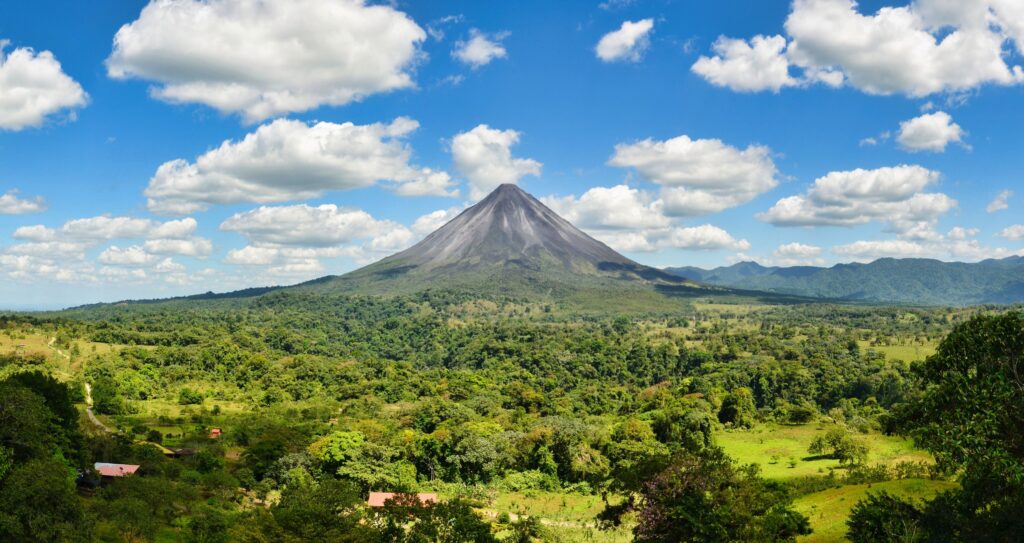LGBTQ+-Friendly Costa Rica: Natural Wonders, Luxury Resorts, and Queer Spaces
Costa Rica has long been a popular destination for queer travelers because of the country’s progressive attitudes and politics when it comes to LGBTQ+ rights. In Costa Rica, same-sex relations have been legal since 1971. In 2020, it became legal for same-sex couples to marry, and it’s also legal for transgender people to change their legal gender, too!
So, for some of us, LGBTQ+ rights and the ease of travel without looking over our backs make Costa Rica a great place to visit, in addition to exploring its major attractions. If you haven’t made plans to visit yet, well, fear not! I’ve pulled together a few sights, places to stay, and fun things to do that you should consider adding to your itinerary if you’re contemplating a vacation in Costa Rica to experience its beaches, natural wonders, and its bustling capital city of San Jose.
Explore Costa Rica’s Capital City
If you’re traveling to Costa Rica, then you will more than likely book a flight to the country’s capital, San Jose. Spend a few days exploring San Jose’s rich history and culture, bustling open-air markets, quiet green spaces, and landmark museums. Check out the Museo Nacional de Costa Rica and see a show at the Teatro Nacional de Costa Rica. Visit the Pre-Columbian Gold Museum, a small art museum with more than 1,600 individual pieces of artwork and monuments of the pre-Colombian era (500 AD to 1500 AD), including gold figures, amulets, earrings, and statuettes.
Queer travelers looking for the perfect people-watching spot should head to the Avenida Central and Plaza Cultura area, home to popular cafes and flower shops.



Nightlife in San Jose
If you’re looking for nightlife, you’re sure to find something at one of the dozen queer bars and clubs in the city. Get your fix of fab drag performances at Club El Teatro or Donde Candi. Located in the heart of San Jose, queer clubbers can dance the night away at Bombóm, where DJs spin house, pop, and Latin music. For a more local vibe, head to La Avispa (The Wasp), one of the city’s oldest gay bars that features two dance floors.
If you’re looking for bars with a cruisy vibe, you may want to consider a visit to Puchos Night Club, where locals and tourists mix and mingle while trans and male strippers let it all hang out! Zona Rosa may be off the beaten path, but it’s an LGBTQ+ sports bar that features male strippers, drink specials, karaoke, and yes, there are cruisy areas for frisky patrons.
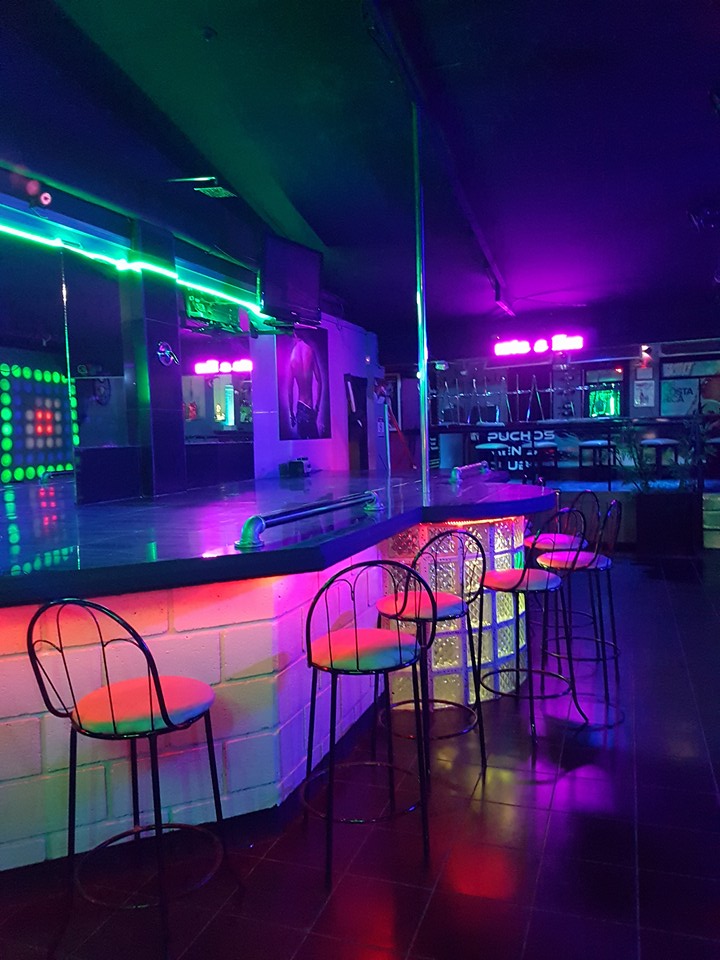



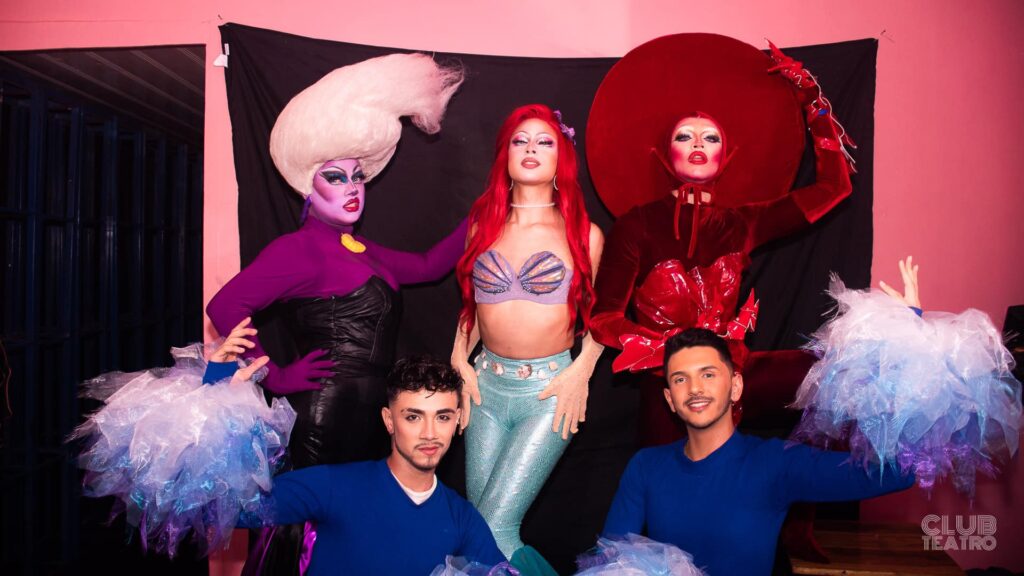
Where to Stay in San Jose
When considering where you should stay, there are quite a few LGBTQ+-friendly or owned hotels and B&Bs in San Jose, including Colours Oasis Resort, a full-service boutique hotel that touts itself as a “warm, affirming and open-minded” resort that “welcomes guests from all backgrounds.” The hotel feature 23 rooms (each with a private bath) and onsite amenities include a pool, a sun terrace, and a full restaurant. This resort is also trans-friendly!
One place I would recommend to queer travelers is the LGBTQ+-owned Hotel Kekoldi located in San Jose’s historic Barrio Amon. The lush garden and bright-pastel colors of the hotel’s interior, including its Art Deco design, provide guests with a warm, cheerful vibe that can only be complimented by the friendliness of the on-site staff.
Gay-owned boutique hotel, Casa 69 has a mix of gay and straight patrons and it’s also welcoming to queer families. You should also know that some hotels in San Jose specialize in arranging LGBTQ+-friendly tours of the city tours and other quintessential Costa Rican experiences found throughout the country. Hotel Kekoldi provides this unique service.
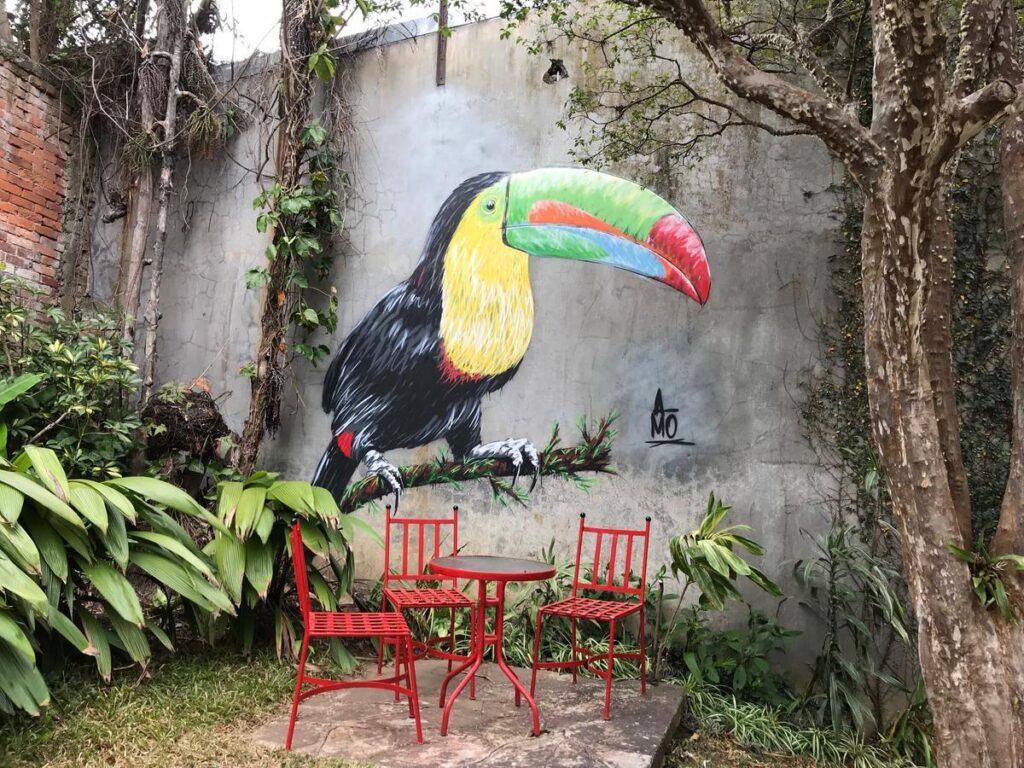
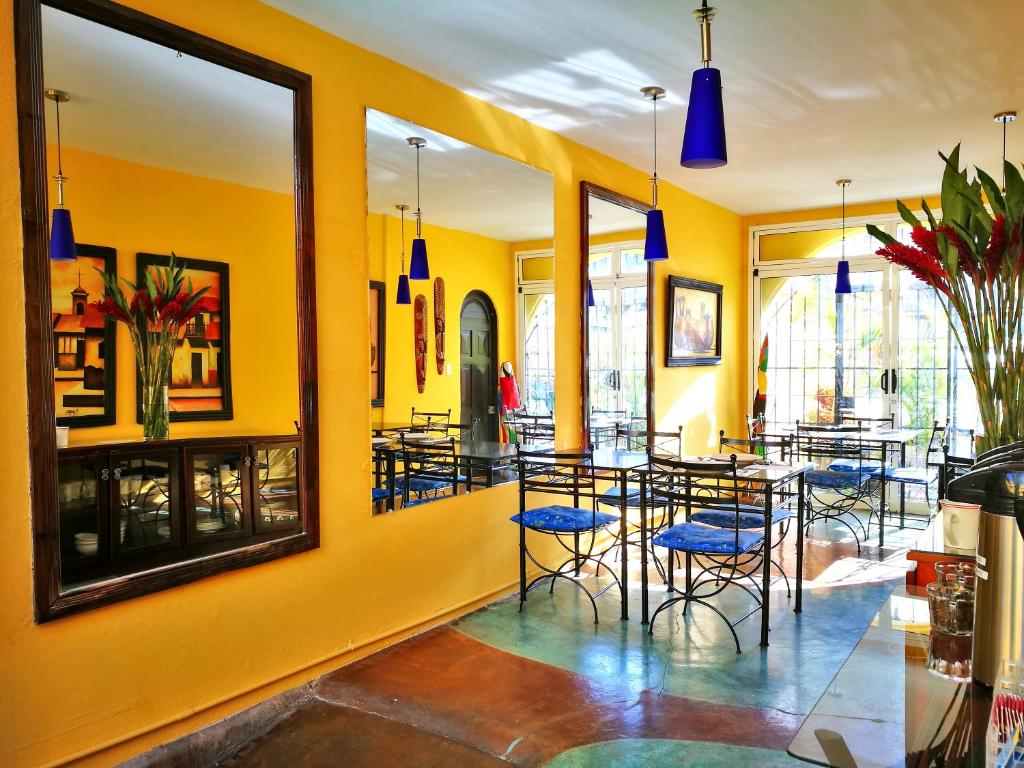

Must-See Places in Costa Rica
Turrialba for the Active and Pampered Traveler
For queer adventurers, head east of San Jose to Turrialba, where you can arrange a fun white-water rafting excursion with a local tour company to hit the Class IV rapids along the Pacuare River, one of the top white-water rafting destinations in the world.
A low-key alternative to riding the rapids is a romantic dinner lit by a fire pit and candles alongside the river. You and your significant other will be surrounded by nature, while served an exquisite meal prepared with fresh, local ingredients steeped in Costa Rican culinary roots with innovative influences from other countries, too!
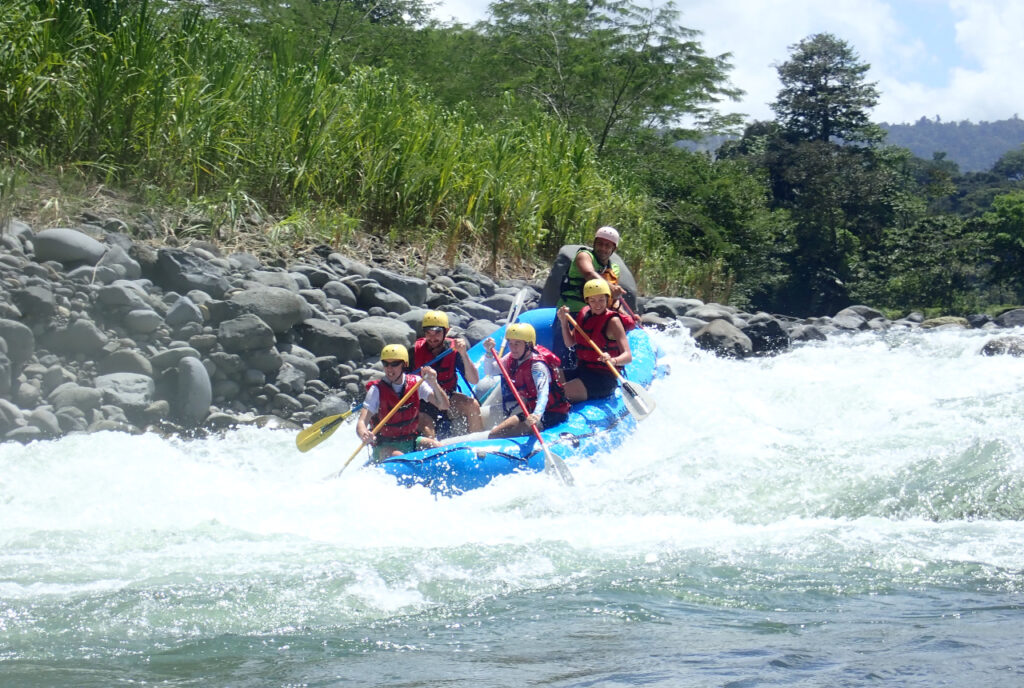
For outdoor enthusiasts, you may also want to consider a 4.5-hour hike in the Talamanca Mountains to see how the Cabécar, the largest indigenous group in Costa Rica, retains its traditional customs and beliefs.
While you’re in the area, check into the Pacuare Lodge where you can relax and rejuvenate in the onsite Jawa Juü Spa, where the spa treatments integrate the wisdom of local ancient cultures, spirituality, and healing. Natural ingredients are used in the spa’s products including body oil, body lotion, body scrubs, body wraps, and facial products.
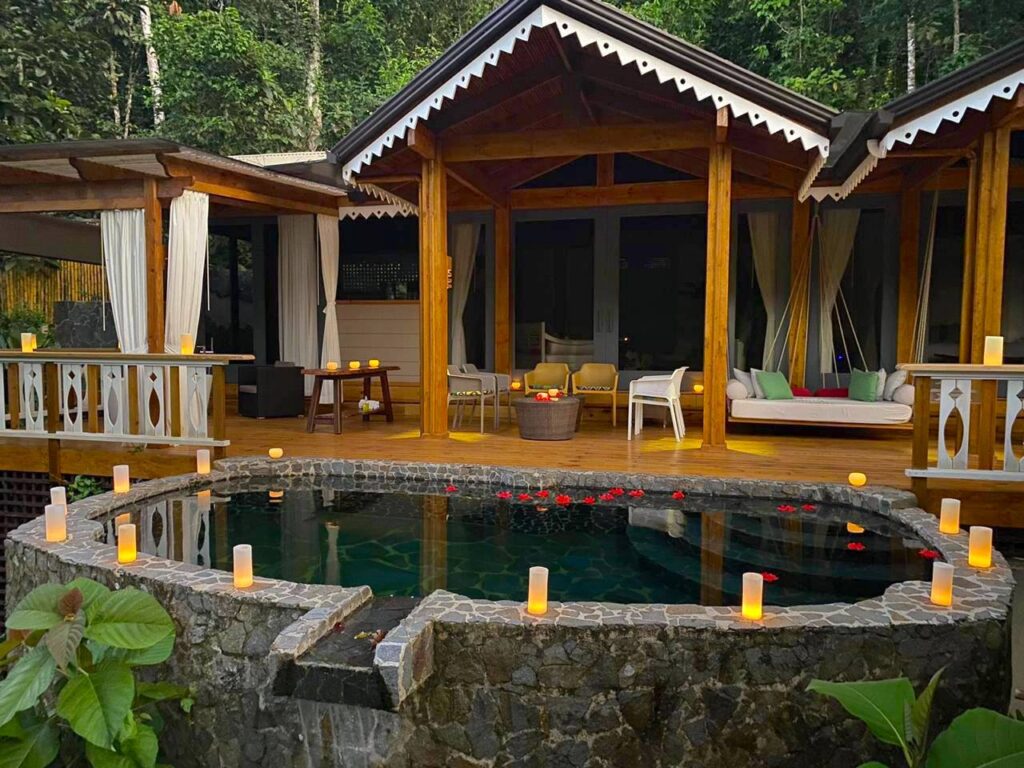
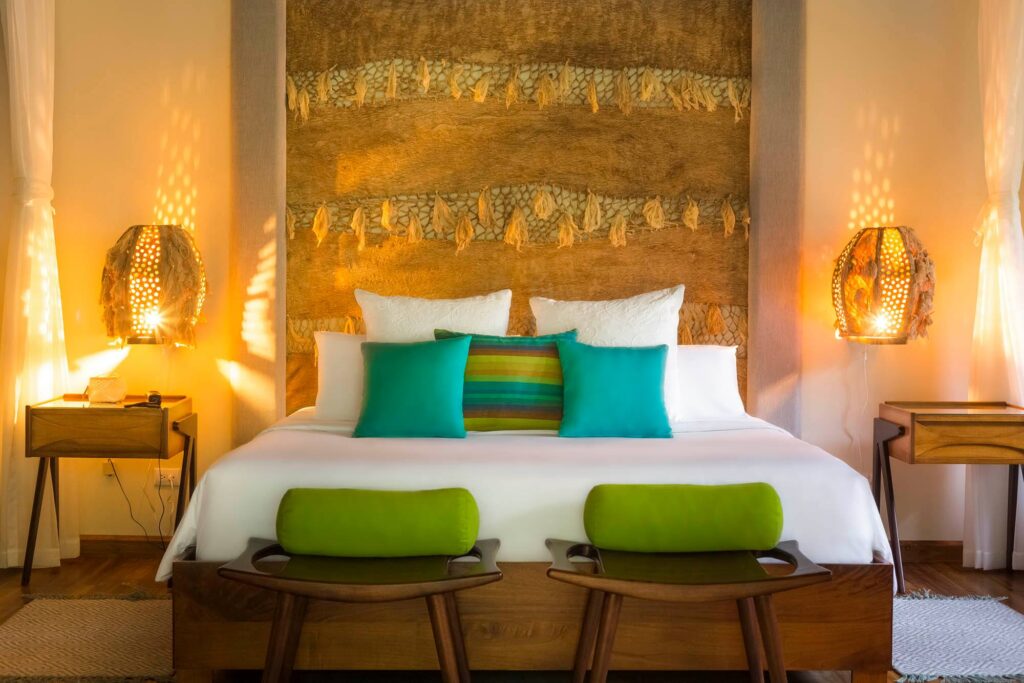
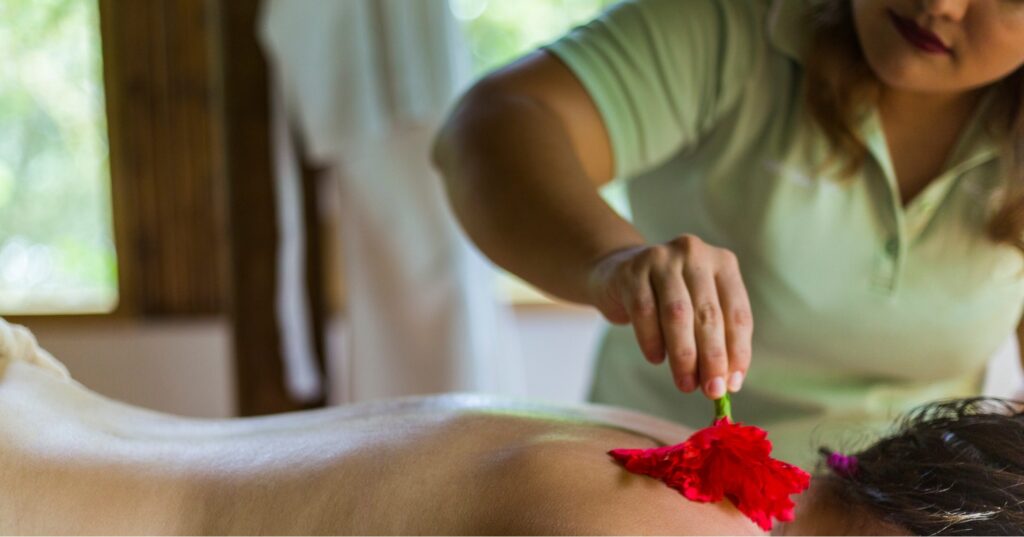
Experience the Natural Wonders of Arenal
A four-hour drive west of Turrialba, you’ll have the opportunity to experience one of my favorite spots in Costa Rica – Arenal. This area of Costa Rica is known for its lush green rainforests, wildlife, and active adventures such as hiking and canopy tours.
You cannot leave Costa Rica without visiting Arenal Volcano National Park. Take a 45-minute hike along a sandy trail and over a lava field as a guide explains the diverse geography of Costa Rica and the history of the active Arenal Volcano. The hike culminates atop a cool lava stream with stunning views of beautiful Lake Arenal.
Other active adventures include a guided tour via the Arenal Hanging Bridges. The well-maintained trail features bridges with jaw-dropping views above the lush rainforest as well as an opportunity to get the perfect Instagram-worthy shot of La Fortuna, a picturesque 200-foot-high waterfall.
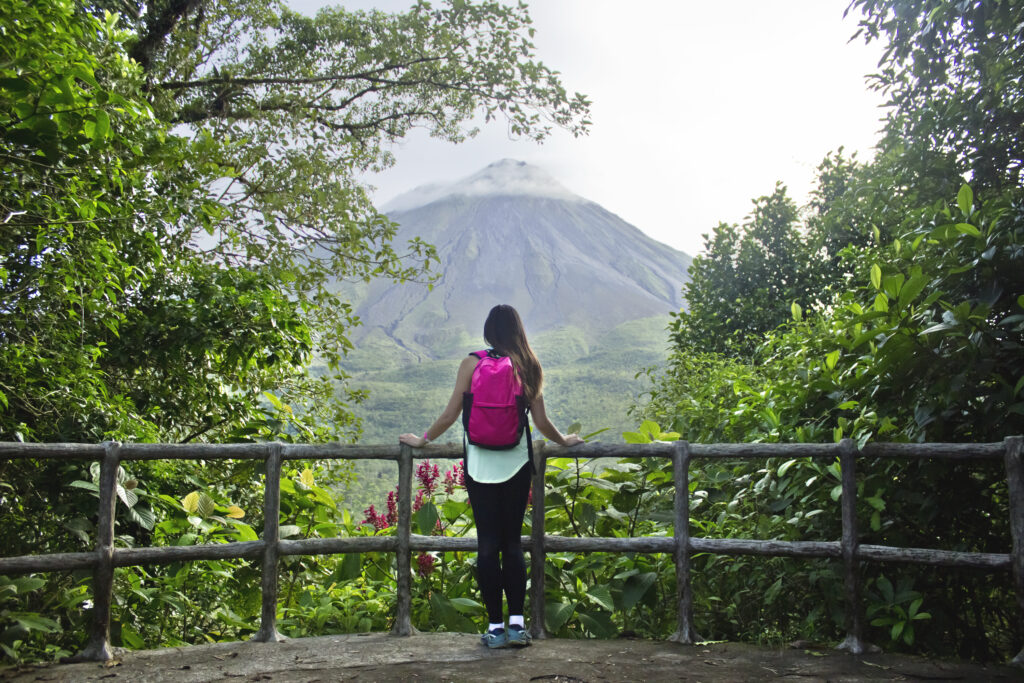
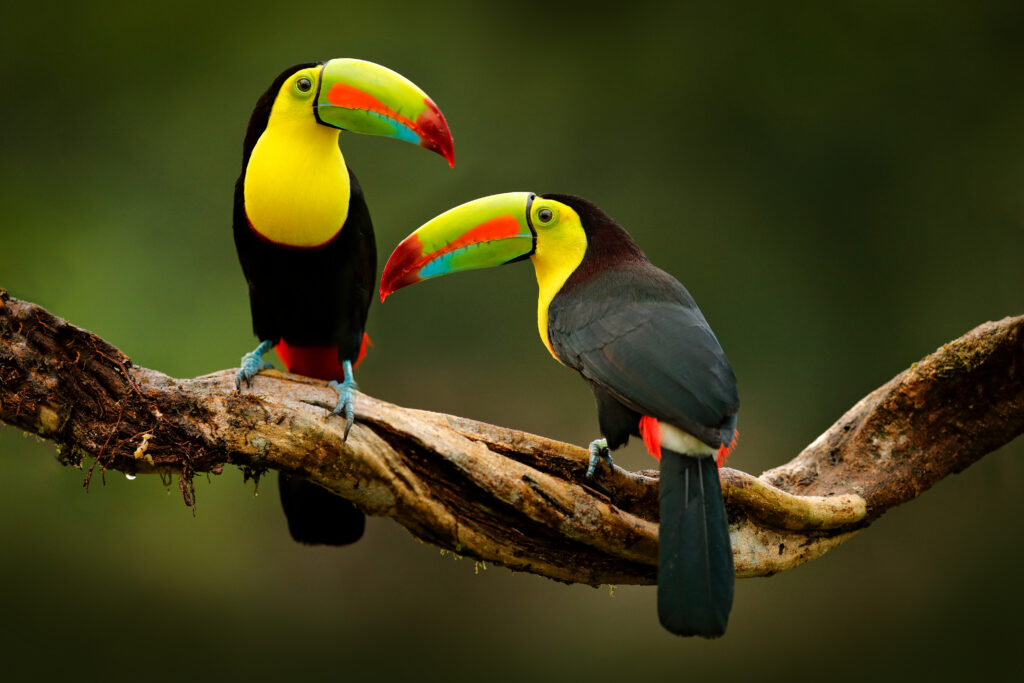

In addition to a tour via hanging bridges, you can embark on a Sky Trek adventure that consists of a system of trails, suspension bridges, and zip-line cables that allow you to observe the rainforest from a variety of different vantage points – above, below, and within the canopy itself. The Sky Trek system is not only available in Arenal but also in Montverde Cloud Forest, too!
You can’t leave Arenal without indulging in a little rest and relaxation at Tabacón Thermal Resort & Spa for a dip in its natural hot springs. It’s probably one of the most recognized spots in Costa Rica thanks in part to glowing reviews by queer travelers and influencers, such as a Couple of Men. You can follow your refreshing dip with a feast on Costa Rican and international fare served in the Tucanes Restaurant or the open-air Ave Restaurant.
Note: Arenal Volcano is one of five active volcanoes in the country. Turrialba Volcano, Paos Volcano, Rincon de la Vieja Volcano, and Irazu Volcano are the other four active volcanos. You can certainly spend a significant amount of time exploring Costa Rica’s volcanos!
Surfs Up on the Guanacaste Coast!
If surfing is one of your favorite pastimes, then you should consider visiting the Pacific Coast of the Guanacaste province in Costa Rica. It’s known for its beaches and parks such as Santa Rosa National Park, home to popular surfing sites and 250 species of birds. Playa Tamarindo and Playa Grande are two go-to beaches for surfers; whereas Playas del Coco and Playa Panama are great for families with kids because the waves are calmer. And even if you don’t know how to surf, it’s not uncommon to find legit instructors who will teach newbies how to ride waves.
The coast of Guanacaste, especially along Flamingo Beach, has some luxury resorts and upscale restaurants. Located a little more than an hour’s drive from Flamingo Beach, Four Season Resort Costa Rica at Peninsula Papagayo beacons luxury travelers from around the world looking for a wellness retreat.
This luxury resort offers meditation classes, 60-minute one-on-one private yoga sessions with a personal instructor as well as Pilates reformer workout sessions. And if you’re a golfer, you can play a round of golf on the resort’s 18-hole Ocean Course designed by pro golfer Arnold Palmer and ranked among the “Top 100 Courses Outside of the United States” by Golf Digest.
Note: Looking for more beaches? The Limón Province of Costa Rica also has highly-rated beaches including Playa Tortuguero (for turtle lovers), Playa Negra (for walkers, swimmers, and amateur surfers), and Play Chiquita (for horseback riding, nudists, and open-minded families).
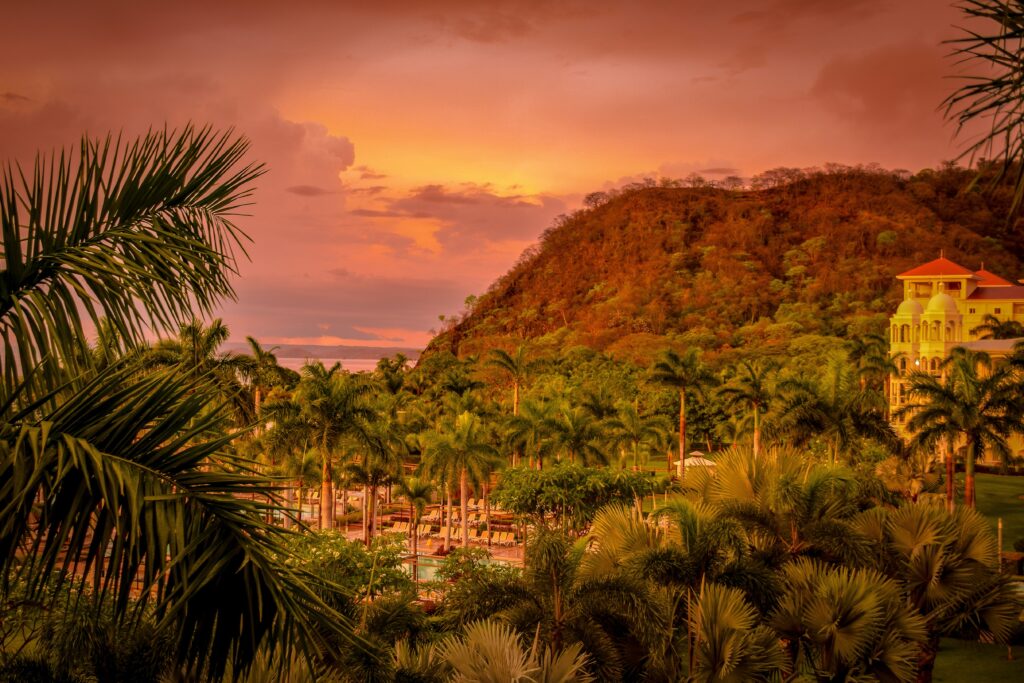


The Welcoming Allure of Manuel Antonio
Manuel Antonio has always been a queer-friendly area in Costa Rico, partly because there are so many existing LGBTQ+-owned hotels and businesses here. There’s no shortage of places to stay, but some recommended gay-owned and or adult-only accommodations include the Villa Roca Boutique Resort & Suites, Tico Tico Villas, Oasis Diverse Adult Retreat, Teva Hotel & Jungle Reserve, and Coyaba Tropical. Not surprisingly, but based on this list of accommodations (some clothing optional), Manuel Antonio is also a popular destination for nudists. And coming in early 2024, The Royal Grand Resorts is set to open, providing another option for queer travelers visiting the area.
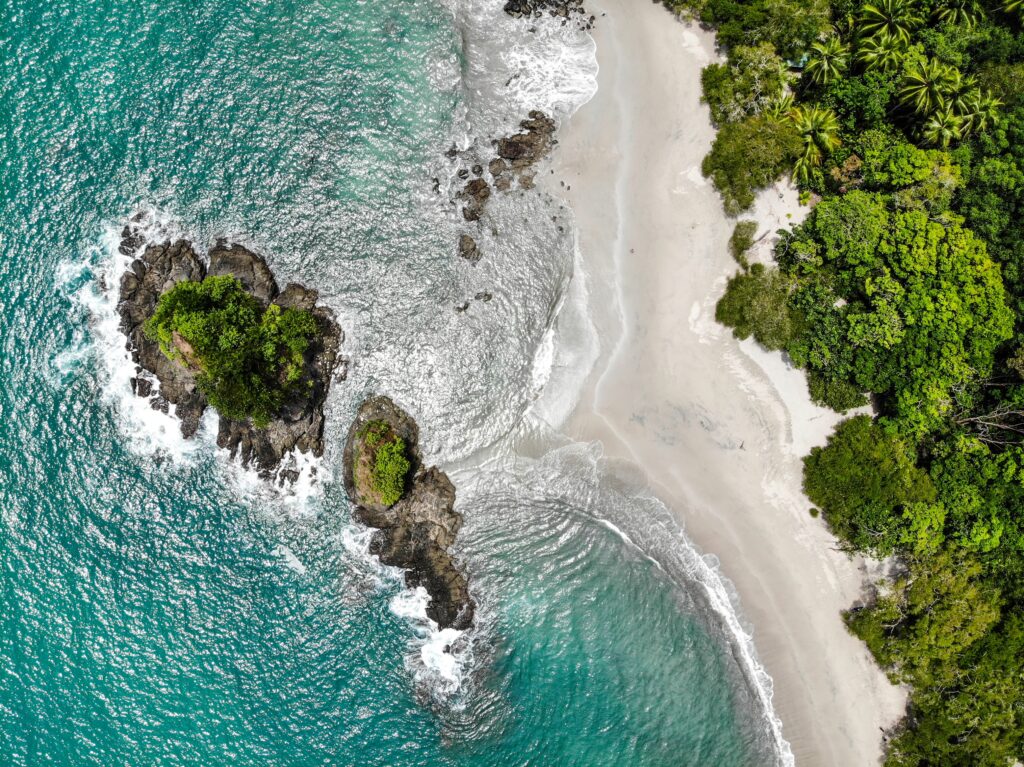
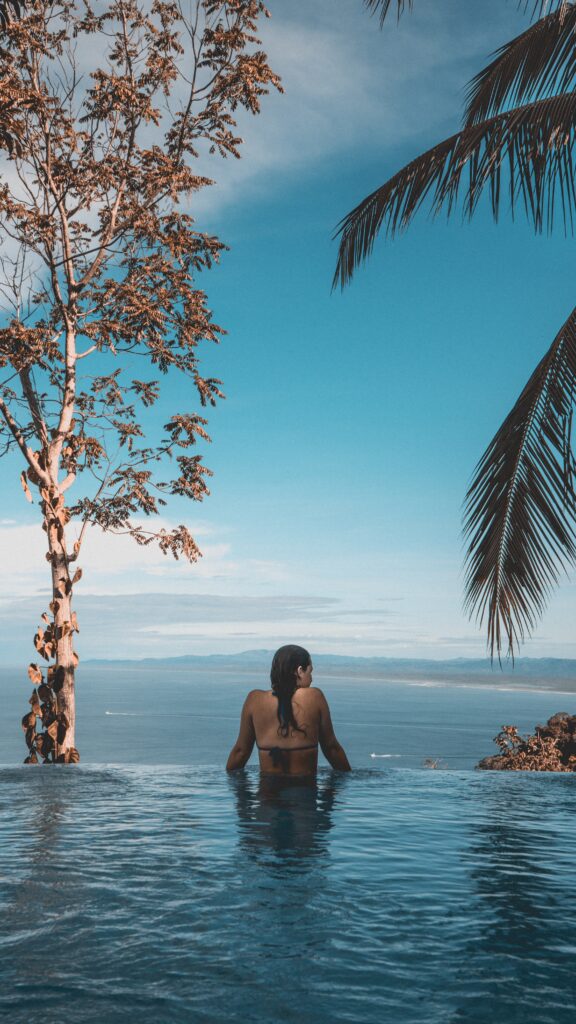
Manuel Antonio does have a gay bar called the Drunken Monkey, where locals and tourists mingle over cocktails and beer while watching a drag show or dancing to the resident or guest DJs. Café Milagro, La Lambretta Pizza, and Emilio’s Café are also popular hangout spots.
A 2.5 hour-drive or 20-minute flight from San Jose, Manuel Antonio National Park is home to a few beaches: Playa Espadilla, Playa La Macha, Playa Manuel Antonio, and Playa Playitas. You’ll find most LGBTQ+ beachgoers on the far north end of Playa Espadilla near “the large rock.”
On Sunday afternoons, many local LGBTQ+ folks gather around the rainbow flags put up by Manuel Antonio Diverso. Unfortunately, there are no restaurants nearby, so you’ll have to pack your own snacks and drinks if you don’t plan on buying anything from the occasional peddler on the beach.

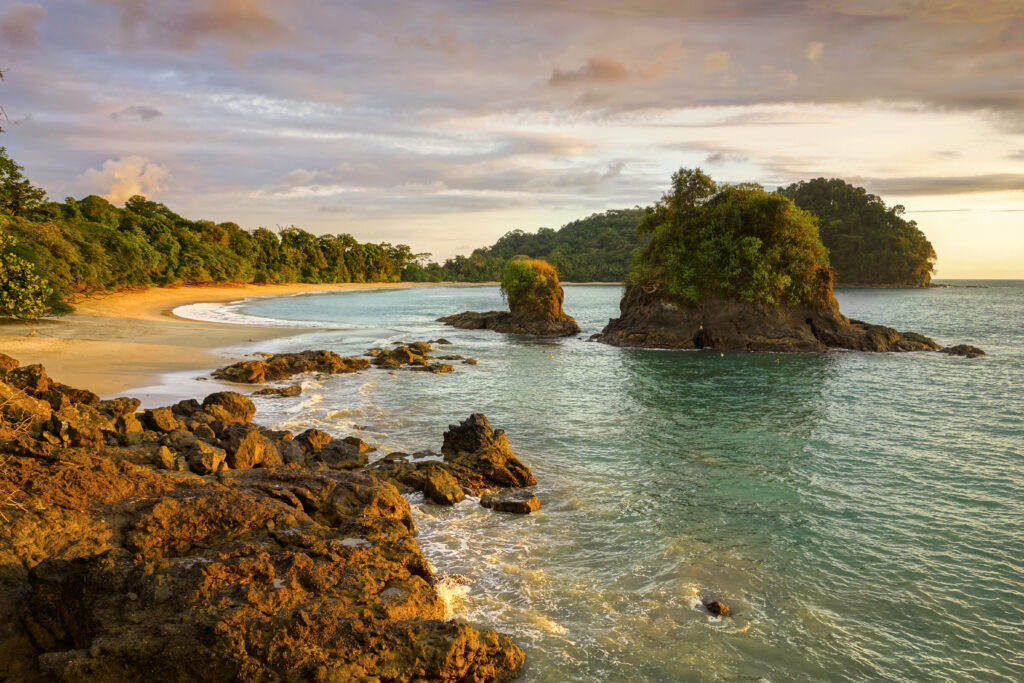
Located past the end of Playa Espadilla (cross over two sets of rocks), Playa Playitas is another gay gathering point that was a clothing-optional area until a hotel opened nearby. You won’t find the gays shedding their clothes there anymore.
Getting Around: If you plan to spend a week or more in Costa Rica, I’d strongly recommend renting a 4×4 or jeep necessary for several bumpy and pot-hole-laden roads to some of the country’s biggest attractions. A rental will also allow you to see more of the country and having your own wheels also provides you with more flexibility to add or change activities if necessary.
Hopefully, with all the info above, you should have some clear ideas and inspiration to help you plan the perfect LGBTQ+-friendly vacation in Costa Rica.

